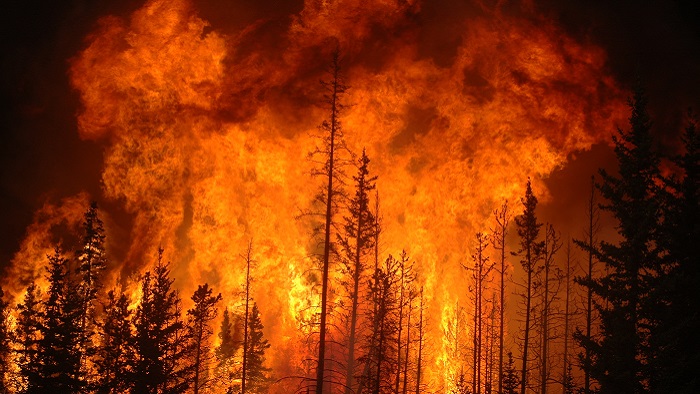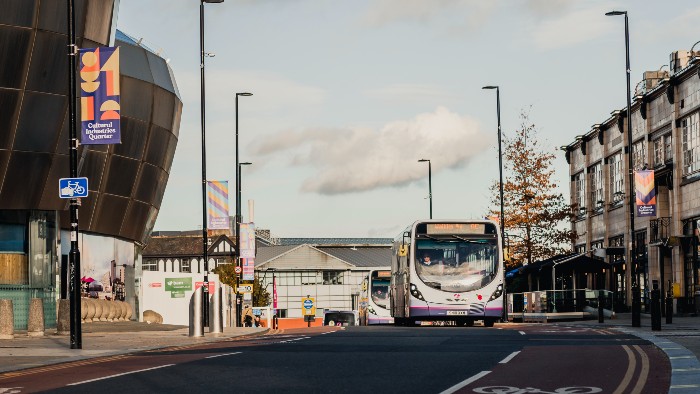Witnessing a wildfire can be an extraordinary emotional experience – its raw power, speed and ferocity are humbling, if not terrifying. Thankfully, there are natural processes that can be used to help reduce the frequency and severity of wildfires. No one can be unmoved by the light of those currently experiencing the horrors of these exceptionally fierce fires, but we must not forget to learn from the experience, as it is likely to repeat.
Wildfires have always been an influential process in natural parts of the world. In cool uplands, the occasional lightning strike can not only burn out patches of woodland, to allow grassland, heath and scrub to redevelop, but also causes essential nitrogen nutrient to be fixed into the soil. In warmer climes, fire clears dense thickets of thorny, woody plants, releasing space and nutrients to allow regrowth of young, softer shoots and diverse plant-life. This is forage for food chain and the human civilizations that have relied upon the bountiful and cyclical supply of energy that is transformed by fire. Without fire there would be much less diversity on the planet. However, regional ecosystems develop in response to the frequency and intensity of fires. Wildfires may be severe, but rare, or frequent, but small, in which cases the wildlife adapts and can recover. Where fires become frequent and severe, life is much harder. It is also a problem where severe fire features in areas where wildlife has no previous, regular experience of wildfires (and so no adaptations in their lifecycles). Recent years’ wildfire events are more intense and larger than previously recorded, so there is a new threat to wildlife systems as well as human infrastructure.
Some plants encourage fire because they are quite flammable. Heathers are slow-growing, woody shrubs, which can be outcompeted by grasses. Heathland lightning strikes is the age-old way of clearing the competition, as the burning of the old heather wood kills off the invaders and produces smoke which stimulates heather seedbank to germinate. Mediterranean herbs and Australian eucalyptus are well known for their aromatic properties. Those lovely scents and flavours are not for our benefit. These plants smell long before they are cooked, because the aromatic chemicals evaporate at lower temperatures than does water from the plant. By releasing the aromatics, the plants effectively cool themselves in a similar way to our sweating process – the hotter molecules evaporate, leaving the cooler ones, thus reducing the overall average temperature. In a hot climate, cooler plants not only survive, but retain moisture and are less likely to combust. Additionally, many of those chemicals suppress the growth of other plants (allelopathy), which maintains bare ground between bushes and less fuel for fires to spread.
A human-induced fire may be worse than a natural one, because of how or where it was started. Burning of grain stubble was banned in 1993 (UK) because of its risk of wildfire as well as its devastation of wildlife and air pollution. Each year we experience peat-land fires caused by cigarette ends and disposable barbeques, discarded on dry, sunny days. Because of their long, slow smoulder, these sources cause deep fires in naturally combustible soils. This is different from natural sources of ignition, which are quick and associated with ameliorating, wet weather.
Larger Wildfires are a New Threat
Large wildfires create not only widespread destruction, but if fuelled enough with more energy, they can create their own climate. In 2022, the wildfires in the USA and Australia were so large that they fed themselves. They produced such heat that columns of hot air rose so fast and so far, that lightning was generated. This together with strong, fanning winds, caused more fires and, in turn, more hot air spreading higher and wider. These huge wildfires are self-perpetuating and utterly uncontrollable. It is likely that without a break in the dry easterly winds, the current Mediterranean fires will develop similarly. Humans need to prepare for this as a new, annual threat.
The Human Impact
This year (2023) it was confirmed that we are now in the Anthropocene – the era where the planet has been measurably affected by human activities. Whilst climate change makes wildfires more common, human impact on our landscapes can directly increase the likelihood of wildfire and exacerbate the consequences. If we introduce plants that are not so suited to the climate of an environment, then there may not be such effective natural regulation. In the case of agriculture and forestry, we take steps to reduce the devastation of fire in our modified, production areas. Worldwide timber production is dominated by stands of fast-growing conifers. These trees survive cooler climates with their resinous sap ‘antifreeze’. Resins are also quite flammable. When flammable plants are widely spaced and separated by bare ground or less flammable plants, then there is likely to be less devastation. However, crops are grown densely. Typically, we make firebreaks by burning corridors between blocks of combustible crops.
Firebreaks present an opportunity for plants to regrow, and the most likely successors are from the local seed sources – the surrounding crop. Fire, therefore, must be used frequently to prevent fire. In a warming and windier climate, this presents a higher risk. The solution, therefore, is to consider less dense production, with nature-mimicking firebreaks provided by other vegetation. For example, broadleaved, deciduous trees are less flammable than tightly grown conifers. This leads to the obvious solution that the best way to prevent fires is not to burn firebreaks, but to grow them with self-populating, native species. Effectively, rewilding areas around the production areas should be a better, natural amelioration of the fire problem. And it is better for biodiversity too.
Opportunities From Nature
By integrating our monocrop production landscapes with more diverse natural vegetation, we create a mosaic of ecological opportunities. Different plants provide different levels of combustibility. But despite woody material being an obvious fuel, all plants have a role in reducing the causes of fire. It is well documented that urban areas dominated by hard surfaces and artificial grass experience much higher temperatures than urban areas with living vegetation. Fire is caused by the combination of fuel, oxygen and heat. By transpiring water into the air, plants cool themselves. By casting a shadow, they cool the ground. These small effects, multiplied up, are better at preventing fire than a landscape dominated by lifeless concrete, metal or plastic. And in urban environments, where there is no genuine native species, we have the further opportunity of planting paler coloured, more reflective plants, which absorb less heat from the sun’s rays, thus further cooling the local environment. We must seize the opportunities to change our urban and rural environments to promote cooling, using a combination of natural lessons and human-made technology.



